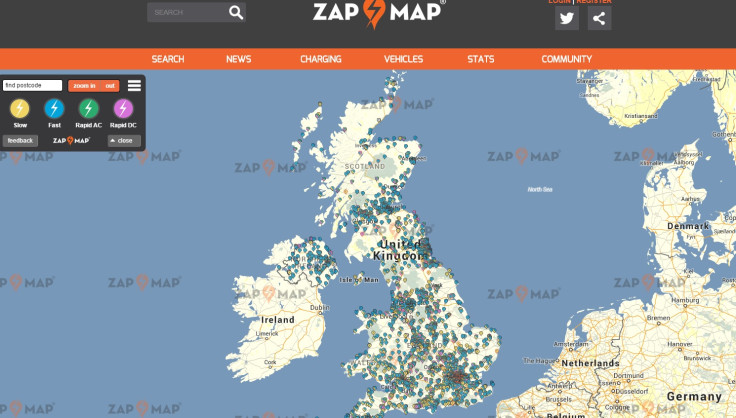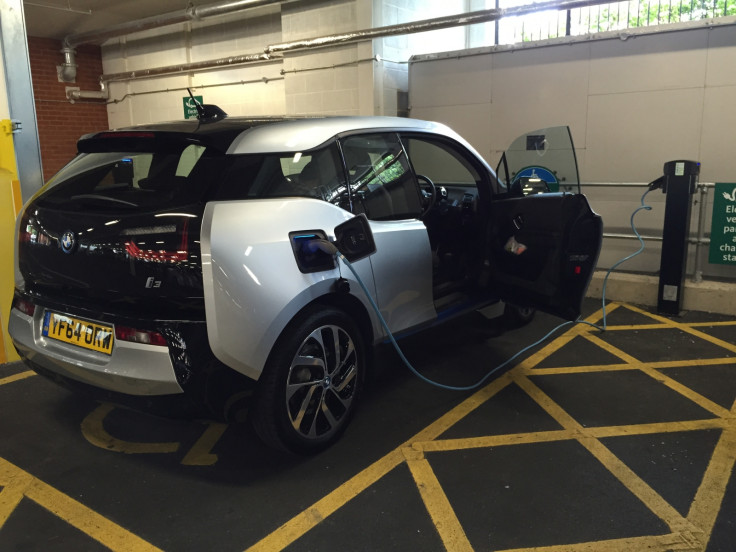Electric cars are ready for the future - but the UK's charging network is not

This detailed look at the state of electric car charging in the UK comes after I spent three days reviewing the all-electric BMW i3; a great little car, the i3 is fun to drive and genuinely feels like something from the future. Unfortunately, the UK's car charging network is not yet up to scratch.
Here's what happened.
I had assumed BMW would supply the Range Extender version of its i3 - adding a small petrol engine which acts as a generator and adds 100 miles of range to the 80 miles you get from plugging it in. But no, I was given the regular i3 with an electric motor and a battery with around 50% charge and good for 40 miles.
Realising I'd need much more than this to record our video review (we covered over 150 miles filming a six-minute review of the i8), I grabbed my laptop and went in search of a public charger, as the supplied cable didn't reach my first floor flat
The problem was, although many of these are free to use, they often require a subscription and an RFID card to tap on them, a bit like an Oyster card. I hatched a cunning plan to call the charger's helpline and say I'd left my card at home, and set off.
Range anxiety
When learning to drive I always knew Mum's Vauxhall Corsa would last another 30 miles once the fuel light came on, so driving an electric car displaying just 38 miles of range was already making me uncomfortable. Then you realise how few charge points there are - even in South West London and Surrey, where you'd expect electric BMWs to sell like hot cakes - and the range anxiety steps up a gear.

The Charge Your Car website revealed four chargers at a Morrisons supermarket in Weybridge, but on arrival we found three were in disabled parking bays, which were occupied by the non-electric cars of disabled divers. The one available charger was broken.
I called the helpline but was told an engineer would have to open the charger up and flick a switch to reset it. As I was about to leave in search of another charger, the next bay became available, so we plugged in, called up, got the charger switched on remotely due to my lack of an RFID card, and after an hour eating lunch we gained 20 miles of range. I was lucky here, because not all chargers can be controlled remotely.
Membership required
At this point it is worth explaining how the chargers are provided by a number of different companies, just as BP, Shell, etc, own various petrol stations. But while I can refuel and pay for petrol at any station I like (or the first one I find when the car's running on fumes), each charging company requires its own RFID card to activate the chargers.
Pod-Point, for example, charges £12.50 for its card, although a phone app-based and pay-as-you-go system is in the works. Imagine being refused service at a Shell garage because you left a plastic card at home by accident, and you didn't have enough petrol to get back...
Zap-Map and OpenChargeMap are both websites which help you find car chargers, but they disagree with each other, making it unclear which is most accurate and up-to-date. It also isn't always clear who provides the charger, only that "membership is required".

The speed of chargers also varies, while some new chargers are installed and working but don't have their unique ID number written on them, so when you call up the helpline and ask them to be switched on (when you don't have a card), the operator doesn't know which switch to flick without getting you to try all of them.
Filming completed, I returned home and parked up with 20 miles of range remaining. The delivery man from BMW said he had used 40 to drop the car off, so I would have to recharge before it could be taken away on Monday morning.
Another glug of free electricity
Having seen chargers at my local Sainsburys in Wandsworth, I drove there. I navigated past a broken charger - and one with its ID number torn off - and performed the same trick, calling up the helpline to say I'd left my RFID card at home.
The operator, Pod Point, demanded I leave a message with my name and number so they could call back. A few minutes later they returned my call and set a charger to a mode where it could be activated with any RFID card - I tapped my bank card and we were in business; another glug of free electricity flowed into the i3.

I bought a two-hour parking ticket, walked home, watched some tennis, then came back to find I now had 83 miles of range to play with. I drove home and realised this whole sorry saga had taken almost three hours. To top up the battery by just 63 miles. But even here I was lucky, because once again I'd found a charger which could be switched on remotely.
This isn't how I want to spend my Saturday afternoons. And of course, had I chosen to recharge on a Sunday afternoon then my options would have been even more limited, as the larger supermarkets with charging points would have been closed.
Plan your trips carefully
I accept that my time with the i3 - which is actually an excellent and fun car to drive - was spontaneous, and the one thing electric cars absolutely cannot cope with is spontaneity. If you buy an i3 knowing your commute to work is 40 miles each day, and you can park in your garage at night and recharge using a fast charger, then fair enough, the car makes perfect economic and environmental sense.
But for anything more you have to plan your trips very carefully indeed - and even then you could be stumped by a broken charger, an incorrect map, or a supermarket who thinks putting chargers in disabled bays is a good idea. Perhaps it thought they could be used to charge mobility scooters.
The electric car is something I am genuinely excited about. From the i3 to the i8 and every type of Tesla, electric cars look and feel like the future. But the charging network they so heavily rely on is, for now, hopeless. Tesla is making excellent progress with its Supercharger stations, but only its cars can use them. For everyone else the system is a convoluted mess. A unified, smartphone-driven system is badly needed.
© Copyright IBTimes 2024. All rights reserved.







